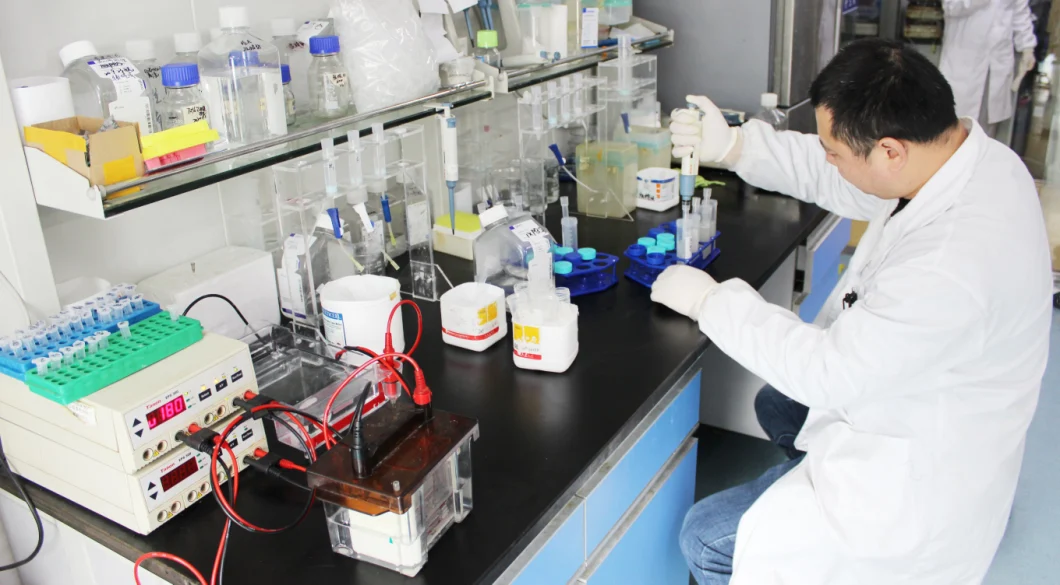
Myc-Tag (10D6) Monoclonal Antibody
Background Members of the Myc/Max/Mad network function as transcriptional regulators with roles in various aspects of ce
Send your inquiryDESCRIPTION
Basic Info
| Model NO. | monoclonal antibody |
| Specification | 100ug/1mg |
| Trademark | Bioworld |
| Origin | China |
| Production Capacity | 3000 Vials |
Product Description
| Catalog No. | MB8024 |
|---|---|
| Product Name | Myc-tag (10D6) monoclonal antibody |
| Applications | WB |
| Alternative Name | Myc proto-oncogene protein; Class E basic helix-loop-helix protein 39; bHLHe39; Proto-oncogene c-Myc; Transcription factor p64; MYC; BHLHE39 |
| Swiss-Prot | P01106 |
| Host | Mouse |
| Reactivity | Human,Mouse,Rat |
| Application_all | WB: 1:2000~1:10000 |
| Product | 1mg/ml in PBS with 0.02% sodium azide, 50% glycerol, pH7.2 |
| Purification&Purity | The antibody was affinity-purified from mouse antiserum by affinity-chromatography using epitope-specific immunogen and the purity is > 95% (by SDS-PAGE). |
| Storage&Stability | Store at 4°C short term. Aliquot and store at -20°C long term. Avoid freeze-thaw cycles. |
| Specificity | Myc-tag mAb detects endogenous levels of Myc-tag protein. |
| BiowMW | ~ 49, 51 kDa |
| Note | For research use only, not for use in diagnostic procedure. |
| Immunogen | Synthetic peptide, corresponding Human Myc. |
Western blot (WB) analysis of Myc-tag (10D6) mAb at 1:5000 dilution Lane1:AML-12 whole cell lysate(10ug) Lane2:PC12 whole cell lysate(10ug) Lane3:K562 whole cell lysate(10ug) Lane4:L02 whole cell lysate(10ug)
Background
Members of the Myc/Max/Mad network function as transcriptional regulators with roles in various aspects of cell behavior including proliferation, differentiation and apoptosis. These proteins share a common basic-helix-loop-helix leucine zipper (bHLH-ZIP) motif required for dimerization and DNA-binding. Max was originally discovered based on its ability to associate with c-Myc and found to be required for the ability of Myc to bind DNA and activate transcription. Subsequently, Max has been viewed as a central component of the transcriptional network, forming homodimers as well as heterodimers with other members of the Myc and Mad families. The association between Max and either Myc or Mad can have opposing effects on transcriptional regulation and cell behavior. The Mad family consists of four related proteins; Mad1, Mad2 (Mxi1), Mad3 and Mad4, and the more distantly related members of the bHLH-ZIP family, Mnt and Mga. Like Myc, the Mad proteins are tightly regulated with short half-lives. In general, Mad family members interfere with Myc-mediated processes such as proliferation, transformation and prevention of apoptosis by inhibiting transcription.















